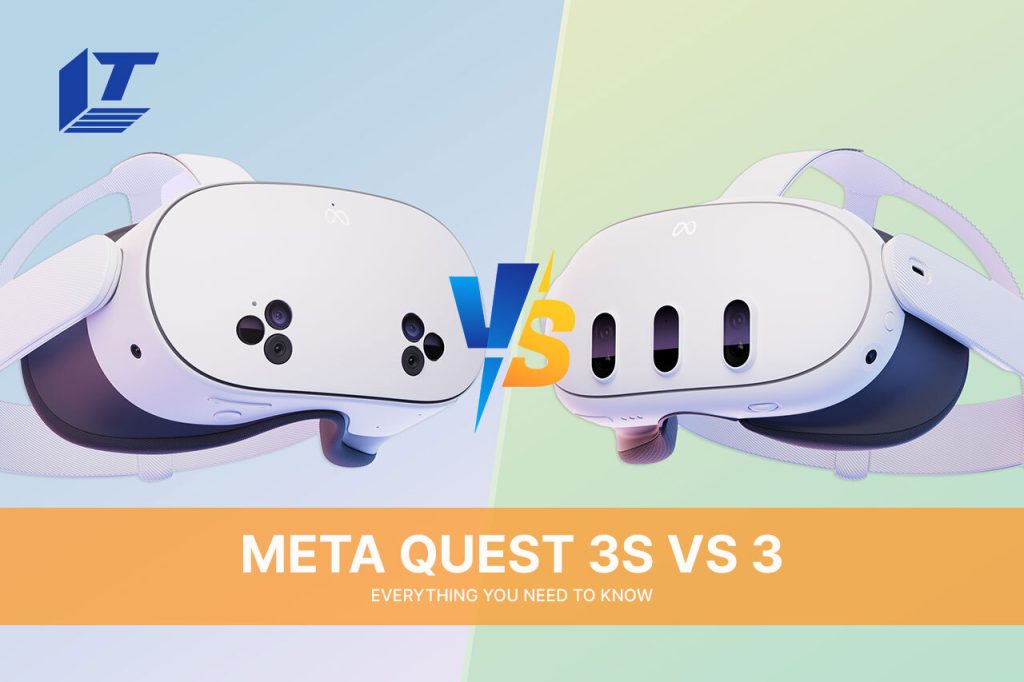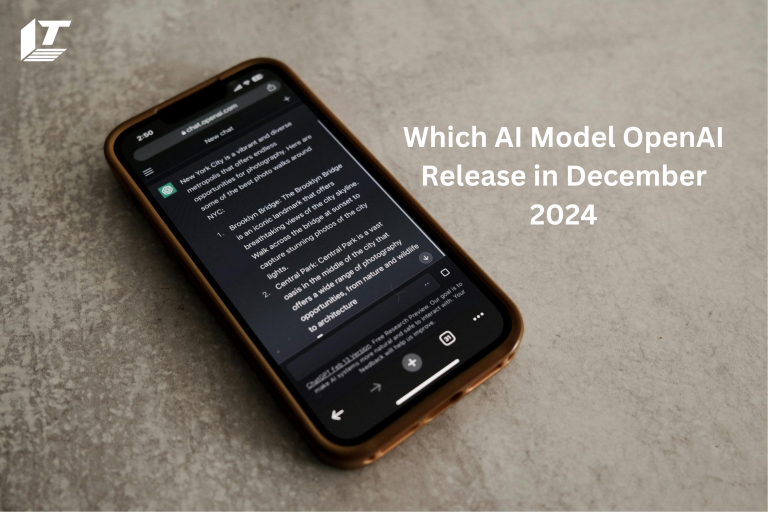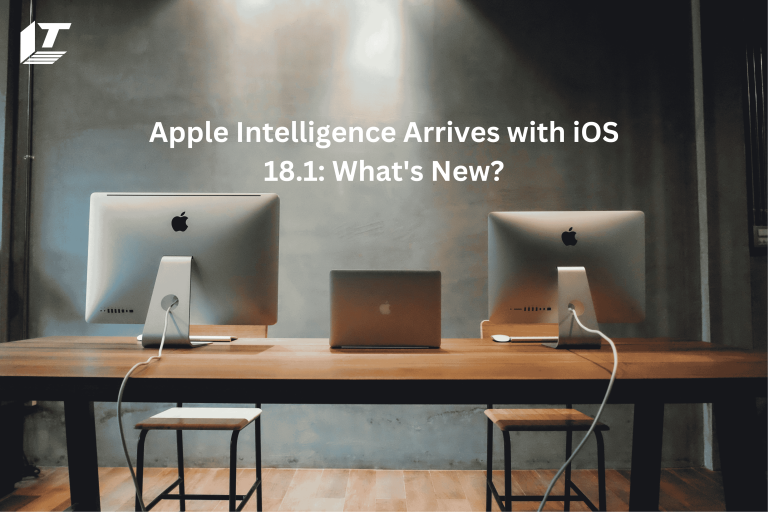The business debuted a new, affordable version of the Meta Quest 3 headset at the Meta Connect event, with an S added to the end and a massive price drop, all while surprising with its Meta Orion AR glasses.
Virtual and mixed reality have grown rapidly in recent years, and Meta has established itself as a major player in the industry. With its stunning graphics, strong performance and wireless experience, Meta Quest 3, which debuted in 2023, completely changed the immersive experience. But in 2024, Meta went a step further and unveiled the Meta Quest 3S, a more cost-effective model that offers a similarly powerful mixed reality experience at a much lower price.
However, what is the real difference between the two models? Is it wise to invest in the Quest 3 or is it worth saving money with the Quest 3S?
We’ll take a closer look at both options in this post to help you make the ideal choice for your needs and price range.
What is Meta Quest 3?
Reality Labs, a branch of Meta Platforms, created a stand-alone virtual reality (VR) headset called the Meta Quest 3. It was the third generation of the Meta Quest line, replacing the Quest 2, and was revealed on June 1, 2023, and released on October 10.
Like its predecessors, the Quest 3 is a standalone device running Meta Horizon OS, a modification of the Android Open Source Project (AOSP). Virtual reality (VR) games and applications can be played directly on the headset or via USB-C or Wi-Fi streaming from a gaming PC. The Quest 3 features updated hardware, including a slimmer form factor and lenses from the Quest Pro, as well as more sensors and color pass-through cameras aimed at mixed reality (MR) software.
Critics praised the headset for its improved performance and slimmer design compared to the Quest 2, but criticized its rear cameras for being unclear and for having some mixed reality experiences at launch.
The system software was also criticized for being largely unchanged.
What is Meta Quest 3S?
Without a doubt, the best VR headset we’ve reviewed so far is the Meta Quest 3. The first and most important lesson from our time spent in long-term testing is this.
However, Meta is beefing up its high-end headset by ditching the 128GB variant and launching the 512GB Quest 3 for $499 in response to the introduction of the Quest 3S, a more affordable option. When you compare what you get, it’s great value for money.
Pancake optics allow for a significantly smaller headset that is notably more comfortable to use. The Quest 3 boasts a higher display resolution than any previous Quest headset thanks to its pancake optics. While it’s not quite up to PC VR visuals yet, it’s getting there. Without a doubt, the display is not to blame.
The improvement doesn’t stop there. The Touch Plus controllers are incredibly comfortable in the hand, offer stunning full-color video passthrough, and offer a plethora of apps and games already available on the Apple Vision Pro.
Meta Quest 3 Vs 3S: Major Differences
• Battery
Both the devices have an average battery life of 2.5 hours. While there are no notable variations in this area, it is noted that the battery life of the Meta Quest 3S may be slightly longer under heavy usage conditions due to the high energy efficiency of the components. Although the improvement is modest, it might be something to think about if you’re planning long sessions.
• A Cheaper Alternative
In response to the popularity of Meta Quest 3, Meta has surprised us with a brand-new mixed reality headset that is positioned as a halfway option between Meta Quest 2 and Meta Quest 3. With 8GB RAM and the same Snapdragon XR2 Gen. 2 processor as the Quest 3, the Meta Quest 3S delivers on par with its big brother. By maintaining this performance, stand-alone virtual experiences can be created that are as realistic and engaging as ever. Gamers will continue to enjoy the same level of overall power and intricate graphics.
• Processor and Performance
The Qualcomm Snapdragon XR2 Gen 2 processor, one of the most powerful chips ever made for virtual and mixed reality experiences, powers the Quest 3S and Quest 3. This shows that both headsets provide good processing performance, making them suitable for games and immersive applications. Both variants have 8GB of RAM, which guarantees lag-free performance and fast loading times on both devices.
• Comparing the Meta Quest 3 and 3S
In return for the lower price, the Meta Quest 3S has a lower screen resolution (1,832 × 1,920 pixels per eye) than the Meta Quest 3. As a result, the headset maintains the performance of Meta Quest 3 but the visual quality of Meta Quest 2. Additionally, the lenses have been modified, going back to Fresnel lenses instead of the pancake lenses found in Quest 3. Even so, Meta claims its resolution is multiplied by 4.5, offering better color and clarity than the Quest 2.
• Resolution and Visual Quality
This is where some distinctions begin to appear. The Meta Quest 3S has a field of view of 90° vertically and 96° horizontally, while the Meta Quest 3 features a larger field of view of 110° horizontally and 96° vertically. Due to Quest 3’s wider environmental coverage, users looking for a more immersive visual experience may find it clearer than the average user.
• The Comfort and Ergonomics of the Meta Quest 3S
Dimensions: Weight and Thickness Since the Quest 3S Meta is 11.6mm thicker than the Quest 3, it weighs a little more on the front. Although it weighs a gram less than the Quest 3 (514 g versus 515 g), the difference is barely noticeable in terms of overall comfort. About the Face-Based Interface: The “Breathable Facial Interface” on the Quest 3S is a face interface that is intended to provide greater comfort during extended or demanding sessions, especially for users who participate in physical activity. take But Quest 3 is not compatible with this interface.
• Storage
Both variants come with 128 GB and 256 GB of storage, which is enough to accommodate games, apps and downloaded content without running out of room. The main difference in this aspect is that the Quest 3S lacks a 512 GB option, while the Meta Quest 3 does.
Comparison Between Meta Quest 3S & 3
| Feature | Meta Quest 3S | Meta Quest 3 |
| Initial Price | ||
| Processor | Qualcomm Snapdragon XR2 Gen 2 | Qualcomm Snapdragon XR2 Gen 2 |
| RAM | 8 GB | 8 GB |
| Storage | 128 GB / 256 GB | 128 GB / 256 GB |
| Resolution per eye | 1832 x 1920 pixels | 2064 x 2208 pixels |
| Field of View | 96° horizontal / 90° vertical | 110° horizontal / 96° vertical |
| Lenses | Fresnel Lenses | Pancake Lenses |
| Battery Life | 2,5 hours (4324 mAh) | 2,2 hours (approx.) |
| Controllers | Touch Plus with hand tracking | Touch Plus with hand tracking |
| Mixed Reality Compatibility | Yes | Yes |
| Display Technology | LCD panel | LCD panel with greater brightness and clarity |
| Separator for Prescription Glasses | Included | Included |
| Weight | Slightly bulkier than the Quest 3 | Lighter and more compact |
| Depth Sensor | No | Yes |
| Ineraxial Adjustment Options | 3 positions | 3 positions |
| Outer Focus Button | Yes | Yes |
Final Conclusion
The Meta Quest 3S is considered the next generation of consumer virtual reality headsets, offering cutting-edge functionality and exceptional value for money, opening up mixed reality to a larger audience. With all the features of the Meta Quest 3 but at an affordable price, the Meta Quest 3S is the perfect virtual reality headset for the ultimate experience. The Meta Quest 3S is a great option for beginners on a tight budget, depending on your level of virtual reality experience and money. Be aware that there are two storage options for the Meta Quest 3S: 128GB and 256GB. Although it will only come with 512GB of storage, the Meta Quest 3 will be the best option if you are looking for performance and a better experience.
Ada Spark is a tech explorer and creative content creator with 6+ years of experience. Appreciate teamwork and creative strategies to promote content. Always looking to work according to the latest trends and create content that makes a difference. Also familiar with infographics and other forms of content.








